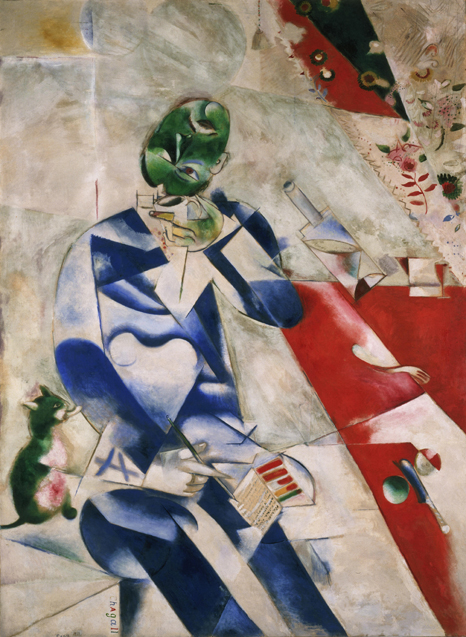Chagall
The Path of poetry
Russia/France/United States, 1909-1947.Russia: Sources and Traditions.
Vitebsk, Chagall’s native town, was home to a large Jewish community nourished by the traditions of the past, which underpinned their identity. It was a world full of rites and customs which nevertheless showed great resistance to innovation. Ever attentive to the expressions of life, Chagall painted the everyday existence of his town and his family, and also the soul of the Russian people.
Tradition and Innovation.
Chagall’s challenge to painting marked a genuine break with tradition. In the 1910s he settled in Paris; this rekindled his deep-seated nostalgia for Vitebsk and for his cultural roots, which was further heightened by the distance. Dreams populated his imagination, between the real and the unreal, between earth and heaven…

Marc Chagall (Vitebsk, 1887 - Saint-Paul de Vence, 1985).
Half-Past Three (The Poet).
(Trois heures et demie [Le poète]).
- Año
- 1911.
- Técnica
- Oil on canvas.. 195.9 x 144.8 cm.
- Propiedad
- Philadelphia Museum of Art: The Louise and Walter Arensberg Collection, 1950. Courtesy of the Philadelphia Museum of Art.
The Sacred and Poetry.
Between his inner life and the boundless world of his dreams, the sacred always occupied a prominent place in Chagall’s creation. Poetry was also a constant resource: himself a poet, he befriended all the important writers of the period, from Cendrars and Apollinaire to Breton, Aragon and Malraux, among others.




